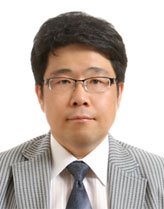
HEECHANG LIM, Ph. D.
- Professor in Full
- 2, Busandaehak-ro 63beon-gil, Geumjeong-gu, Busan, 46241, Rep. of KOREA
- Phone: +82-51-510-2302
- Fax: +82-51-512-5236
- E-mail: hclim@pusan.ac.kr
Education
| 02/2003 Ph.D., Environmental Engineering |
Pohang University of Science and Technology (POSTECH), Pohang, South Korea. |
|---|---|
| 02/1996 M.S., Mechanical Engineering |
Pohang University of Science and Technology (POSTECH), Pohang, South Korea. |
| 02/1994 B.S., Mechanical Engineering |
Pusan National University (PNU), Busan, South Korea. |
Employment
| 09/2017 - Present | Professor in full, School of Mechanical Engineering, Pusan National University, 2, Busandaehak-ro 63beon-gil, Busan, 46241, Rep. of KOREA (Energy system division). |
|---|---|
| 09/2010 - 08/2017 | Associate Professor, School of Mechanical Engineering, Pusan National University, 2, Busandaehak-ro 63beon-gil, Busan, 46241, Rep. of KOREA (Energy system division). |
| 09/2006 - 08/2010 | Assistant Professor Dept of Mechanical Engineering, Pukyong National Univ., 45, Yongso-ro, Nam-Gu, Busan, 48513, Rep. of KOREA (Mechanical Eng. group). |
| 04/2003 - DS/2006 | Research Fellow, School of Eng. Sciences, University of Southampton, High field, Southampton, SO17 1BJ, United Kingdom (Aerodynamics & Flight Mechanics group). |
| 02/2003 - 03/2003 | Postdoctoral Researcher, Department of Mechanical Engineering, Pohang University of Science and Technology, Pohang, South Korea (Flow control laboratory). |
| 02/1996 - 02/2003 | Senior Research Engineer, Department Hyundai Motor Company (HMC), Namyang, Kyounggi-Do, South Korea (Gasoline Engine Development & Test Team). |
| 01/1999 - 02/1999 | Visiting Research Engineer, Japan Aerospace Exploration Agency (JAXA was NAL) Chofu-shi, Tokyo Japan (Computational Science Division). |
Research Interests
RFM lab combines academic excellence with an innovative and entrepreneurial approach to research, supporting a comfortable living and studying that challenges students in their pursuit of learning. The common goal of all our research programs is to gain a deeper understanding of complex, fascinating flows using high quality of me search techniques. Applications include renewable (wind) energy, aerodynamics) fluid mechanics, drag reduction, heat transfer, and so on. Renewable (Wind) Energy
- Turbulent boundary layer flow (난류유동)
- AI/DL approaches to Turbulent Boundary Layer reconstruction (인공지능/딥러닝을 이용한 난류 재현)
- Renewable (Wind) Energy (신재생에너지)
- Wall pressure fluctuation & Noise Prediction (벽면압력변동 및 노이즈예측)
- Computational Fluid Dynamics (CFD, 수치유체역학)
- Active Flow Control, Plasma Actuator(능동유동제어, 플라즈마 액츄에이터)
- Electro-wetting/Microfluidics (전기습윤, 마이크로유동)
 FEEL Laboratory
FEEL Laboratory